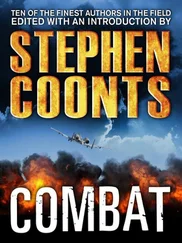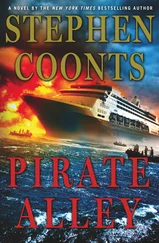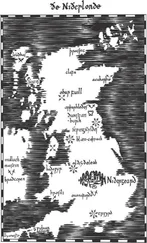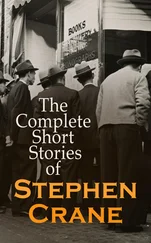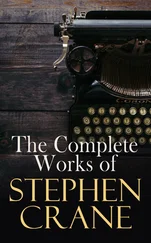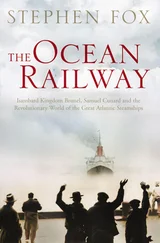Stephen Coonts - The Disciple
Здесь есть возможность читать онлайн «Stephen Coonts - The Disciple» весь текст электронной книги совершенно бесплатно (целиком полную версию без сокращений). В некоторых случаях можно слушать аудио, скачать через торрент в формате fb2 и присутствует краткое содержание. Жанр: Триллер, на английском языке. Описание произведения, (предисловие) а так же отзывы посетителей доступны на портале библиотеки ЛибКат.
- Название:The Disciple
- Автор:
- Жанр:
- Год:неизвестен
- ISBN:нет данных
- Рейтинг книги:4 / 5. Голосов: 1
-
Избранное:Добавить в избранное
- Отзывы:
-
Ваша оценка:
- 80
- 1
- 2
- 3
- 4
- 5
The Disciple: краткое содержание, описание и аннотация
Предлагаем к чтению аннотацию, описание, краткое содержание или предисловие (зависит от того, что написал сам автор книги «The Disciple»). Если вы не нашли необходимую информацию о книге — напишите в комментариях, мы постараемся отыскать её.
The Disciple — читать онлайн бесплатно полную книгу (весь текст) целиком
Ниже представлен текст книги, разбитый по страницам. Система сохранения места последней прочитанной страницы, позволяет с удобством читать онлайн бесплатно книгу «The Disciple», без необходимости каждый раз заново искать на чём Вы остановились. Поставьте закладку, и сможете в любой момент перейти на страницу, на которой закончили чтение.
Интервал:
Закладка:
I broke the connection and sat watching the people arriving. Periodically I scanned the area behind us and to both sides for troops.
Behind me Larijani sat examining his feet and hands. He seemed totally uninterested in the proceedings around the bunker. He certainly had a load to carry for the rest of his life.
I tried not to think about the children I could see going into the bunker. If I were an Israeli like Mottaki, perhaps I would feel as he did. But I wasn’t.
The truth is we were all guilty, all of us: Ahmadinejad, the mullahs, Larijani, Grafton… me… and Joe Mottaki.
I lowered the binoculars and glanced at Davar, who was sitting beside the wall watching me with those deep, dark eyes, her binoculars on her lap.
Once again the ready room of VFA-196 aboard USS United States was packed, with an officer in every seat. At the podium, Commander Burgholzer surveyed his charges and summed up the information discussed during the previous two hours.
“Folks, I’m going to give it to you straight. We are going to have a war. With luck, it will be short, although it won’t be sweet. You know everything I know; you’ve read the Op Plan; you’ve got all the information you need to fly your missions. I want you people to be careful out there. Be safe, be professionals, and make sure you know what you’re shooting at. Any questions?”
One pilot spoke up. “Skipper, what’s going to happen if we put a ’winder into a nuke?”
The Fly scratched his head. “Either it’ll go down and you’ll fly on, or your next breath will be at the Pearly Gates.”
Nobody even smiled.
“If you get there before the rest of us, tell St. Peter we’ll all be along sooner or later and put a keg on ice.” He paused, then added, “Well, most of us will get there. I don’t know about the XO… or O’Hare…”
This time he got a chuckle from his pilots.
Since no one knew Mahmoud Ahmadinejad’s timetable, the carrier was going to a five-minute alert at midnight. “When we know more, we’ll tell you more,” the wing intelligence officer told them in the televised, big-picture brief that had been piped to every ready room.
Four of the Savage Horde’s F/A-18 Hornets were loaded with missiles on the flight deck. The lucky four alert pilots donned their flight gear, arranged their kneeboard cards with frequencies and notes and trooped to the escalator for the ride up to the flight deck. Once there, they checked in with flight-deck control on the location of their aircraft, verified the predicted catapult weight and, using red lights, strolled out onto the crowded deck to look for their steeds. Pilots of another squadron were also manning four F/A-18s, and crews were manning two EA-6Bs, two KS-3 tankers, and an E-2 Hawkeye.
After careful preflights of the aircraft and weapons, the Hornet pilots manned up. The plane captains helped them strap in. Electrical power was applied to the plane and, the pilots fired off the computers and began typing in waypoints and checkpoints. They didn’t, however, start engines. Once the engines were started, fuel was being consumed, fuel they would need to reach their assigned patrol areas or engage enemy fighters. Ready to launch on five minutes’ notice, they would wait until the admiral gave the order before bringing their aircraft to life.
The E-2 Hawkeye, with its giant radar housing riding above the center of the wing, did start engines. Chicago O’Hare was in a Hornet cockpit, playing with her computer and generally killing time, when she felt the ship begin a turn into the wind. The yellow-shirted taxi directors worked the E-2 to Catapult Three on the waist. Chicago watched as the catapult crew readied the cat, put the plane on it, and sent it off into the night. The Hawkeye would carry its radar into the lower stratosphere, there to watch thousands of miles of sea, and Iran. The information it gathered would be data-linked to the ship to keep the decision-makers there informed, and if necessary data-linked to airborne Hornets. The buzzword was network-centric warfare; and it worked.
After the Hawkeye was launched, the ship came back to its original course, which was to the northwest.
The captain of United States and her sister carrier, USS Columbia , which was steaming ten miles northward with her escorts, had been told to place their ships as close to the mouth of the Gulf of Hormuz as possible while still maintaining the sea room they needed to come into the wind for launches and recoveries. Every sea mile closer to the mouth of the Gulf was a mile the airplanes didn’t have to fly. Yet every mile close to the Iranian coast decreased the task force’s reaction time to antiship missiles, if the Iranians launched any. Admiral Bryant and the captains had conferred. The admiral weighed the imponderables against the requirements of the mission and decided where he wanted the ships. As with every military decision, he and the people he was responsible for would have to live with the outcome, whatever it was.
Chicago sat in her cockpit looking at the other planes on the deck, the sailors, the night sky, savoring the gentle rise and fall of the ship as it rode the back of the sea and the smell of the night wind, rich with salt. She also thought she could detect a hint of the land on the wind, but perhaps it was only her imagination.
Air Force One was somewhere over the North Atlantic when an aide woke Jake Grafton, who was napping in a seat near the rear of the cabin. The president wanted to see him.
Jake found the president in a thoughtful mood. He wanted to talk, and did so. Jake sat and listened as the president discussed the political forces that had molded modern Iran. Merely thinking aloud, he ruminated on Mir-Hossein Mousavi, the Iranian presidential candidate who apparently won the last presidential election and had been under loose house arrest ever since.
Jake sat silently listening. The president obviously realized the personal risk he was taking by going to Baghdad, and Jake admired him for it. Yet the president didn’t mention it. Nor did he mention the danger Grafton would face in Iran.
“Mousavi is the future of Iran,” the president remarked at one point, glancing at Grafton, “if he lives to see it.”
Jake nodded his agreement.
Finally, after nearly an hour, when the president had run dry on Iran, he changed the subject. “I personally owe you a debt of thanks, Admiral, for your efforts, regardless of how all this turns out. Wisdom is hard to find these days. I wanted to thank you to your face.”
Embarrassed, Jake Grafton merely nodded.
“Let’s both try to get some sleep,” the president said. “I suspect we’re going to need it.”
After Air Force One landed in Baghdad and the president had departed with the military brass that had been hastily summoned to meet him, Jake Grafton slipped away. Soon Grafton was in a helicopter on his way to As Sulaymaniyah, on the northeast border of Iraq.
At As Sulaymaniyah, the chopper circled the field, then landed beside a dilapidated hangar sheltered by trees on the side of the field away from the main parking ramp. Grafton got out with his warbag, and the helo departed.
He pounded on the personnel door, which was opened by a man in a rumpled army flight suit and dirty white socks, holding a 1911 automatic in his hand.
“John Pepper?”
“Yeah.”
“Jake Grafton. I want to go to Tehran.”
Pepper snapped on a light and looked Grafton over. The admiral was wearing jeans, a short-sleeve shirt, tennis shoes and no hat.
“Admiral Jake Grafton?”
“Yep. That’s me.” Jake passed Pepper his CIA ID card. Pepper scanned it, passed it back and tucked the pistol in its holster at his waist as he stiffened to attention.
Читать дальшеИнтервал:
Закладка:
Похожие книги на «The Disciple»
Представляем Вашему вниманию похожие книги на «The Disciple» списком для выбора. Мы отобрали схожую по названию и смыслу литературу в надежде предоставить читателям больше вариантов отыскать новые, интересные, ещё непрочитанные произведения.
Обсуждение, отзывы о книге «The Disciple» и просто собственные мнения читателей. Оставьте ваши комментарии, напишите, что Вы думаете о произведении, его смысле или главных героях. Укажите что конкретно понравилось, а что нет, и почему Вы так считаете.



